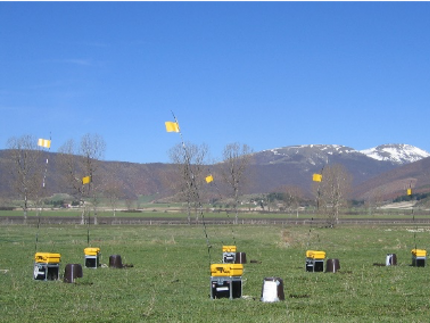Fieldcourse Array Seismology
Matthias Ohrnberger
What is better than recording the seismic wave field with one seismometer? Correct! It is generally much better to observe the seismic wave field with several separately placed seismometers, a so-called seismic array. The parallel recording of the continuously present ground motion in space and time by a set of spatially distributed seismic sensors allows enhanced insight in wave propagation phenomena. It provides a direct measurement of the apparent propagation speed and direction of individual wave arrivals along the recording geometry leading to a better idea on the wave types in the observed wave field.
The goal of array seismology is manifold. The purpose of observation reaches from building structural subsurface models of the shallow part of the ground below the array recording site to enhancing and verifying tiny details in the deeper earth structure. In addition, arrays help to understand for example dynamic physical processes inside the earth creating seismic waves like earthquake faulting or volcanic eruption phenomena.
Besides learning about the theoretical background of array signal processing techniques in a normal classroom environment, students will study the practical side of array seismology during a 4-to-5-day field course as integral part of the module. Within the field course students will get in touch with modern seismological equipment and conduct their own array experiment starting from experiment design to deployment of seismological equipment and final data recovery. The data acquired during the field course will be analyzed by the students and summarized in an obligatory report.

